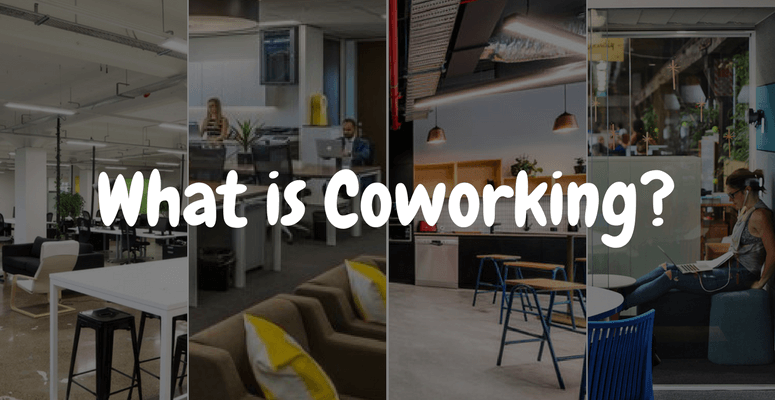The rise of millennials, new technologies, and an increasingly digital world have all contributed to a fundamental shift in the way people work. More and more people are working from home or a co-working space instead of from traditional office spaces. Co-working spaces—or collaborative workspaces—are emerging as the third option for remote and local workers alike. In these forward-thinking environments, members have access to social networking, meeting rooms, and shared workspaces where they can focus on their tasks without distraction.
The co-working space has been shown to stimulate creativity and productivity. It has also been shown that people who work from home or in an office tend to be less productive than those who work from a co-working space. The reasons for this are varied: it could be that the physical environment is different; it could be that there is less distraction; it could be that social interaction is more beneficial than working alone at home. Whatever the reason, it seems clear.
In this blog post, we’ll introduce you to co-working spaces as an alternative workplace and explain why they’re gaining so much traction. Keep reading to learn more!

What is a Co-working Space?
Co-working spaces are becoming a popular trend in the workplace. These are places where people come to work and share ideas with others. The idea is that by working together on a project, the team will be more productive than if they were working on their own. A co-working space is an office environment that you can work in regularly as a member of a community. Unlike a traditional office, you don’t actually own a desk there, nor do you have your own private office. Instead, you’ll likely be part of a large open space with other remote workers and teams. Co-working spaces are typically cheaper than renting an office and more collaborative than working from home. Some co-working spaces provide amenities like coffee, printing services, meeting rooms, and other features. Some even offer the type of health benefits like insurance and retirement packages. Most co-working spaces are open to the public and accessible to people who don’t want to work from home or rent their own office. If a co-working space doesn’t work out, you can usually end your membership at any time.
Benefits of Working In A Co-working Space
– Focus on the work:
One of the main benefits of co-working spaces is that they let you focus on your work. Co-working spaces tend to be quiet, distraction-free zones where you can create your best work. You’ll be surrounded by other people who are there to work—not talk—which means you won’t be interrupted.
– Networking and collaboration opportunities:
Working with other people in a co-working space will likely lead to professional connections and opportunities for collaboration. These connections can help you both professionally and personally, as you may end up collaborating with people in your network on various projects.
– Meeting space:
A co-working space can provide you with a place to host meetings, which can be helpful if you work remotely or from a home office. Meeting in a co-working space can be more professional than meeting from home, and you’ll likely have access to a variety of meeting rooms for larger gatherings.
– Social connections:
Some co-working spaces host social events like happy hours to help members make connections and form a real community. This can be helpful if you’re a remote worker who doesn’t have other people in your city with whom to connect.
– Cost-effective:
One of the biggest benefits of co-working spaces is that they’re usually much less expensive than renting an office. This can save you thousands of dollars each month, which can help you get off the ground with your business or career faster.
– Flexibility:
You can usually end your co-working membership at any time, which means you have flexibility with your schedule. This can be helpful if you have a busy lifestyle or want to travel and make more time for hobbies and other interests.
Types of Co-working Spaces
Co-Hub:
This is one of the largest co-working spaces in the world, with locations in dozens of countries around the globe. This is a great option if you want to work with many other people in various industries.
Co-working:
This is one of the most basic forms of coworking, where you share a space with other remote workers and teams. You likely won’t have access to any additional amenities beyond your desk and the internet.
Hot desks:
This is one of the most flexible types of co-working, where you can show up when you need to and leave when you have to. You’ll likely have access to conference rooms and other co-working space amenities as well.
Virtual co-working:
This is an online community of people who work remotely, usually in a variety of industries. You can connect with others via online chat rooms and other types of communication.

The Rise of the Collaborative Working Culture
The collaborative working culture is a shift in the global workplace that encourages people to work together online and in person. The rise of tech platforms like social media, video conferencing, and other remote work tools has contributed to this shift. The collaborative working culture has also been influenced by changing demographics, like the rise of millennials that prefer to work in more collaborative environments and the increase in women who are entering the workforce. With companies and organizations becoming more distributed and more people working remotely, collaborative working cultures have become the norm. In fact, the majority of organizations now practice some form of collaborative working, with 38% of companies saying that the majority of work is done at a distance. Collaborative working is now common across industries, with 71% of all organizations using social media for business purposes.
Conclusion:
As we’ve discussed, the rise of millennials, new technologies, and an increasingly digital world have all contributed to a fundamental shift in the way people work. More and more people are working from home or a co-working space instead of from traditional office spaces. Co-working spaces—or collaborative workspaces—are emerging as the third option for remote and local workers alike. In these forward-thinking environments, members have access to social networking, meeting rooms, and shared workspaces where they can focus on their tasks without distraction. Working from an office can be isolating, and working from home can be distracting. By choosing to work at a co-working space, you’ll have access to other professionals, networking opportunities, and all the amenities of a traditional office—without the price tag.
One of the biggest benefits of co-working spaces is that they’re usually much less expensive than renting an office. This can save you money each month, which can help you get off the ground with your business or career faster.
Included
amenities
Our co-workspaces are equipped with all basic work amenities; this ensures a comfortable work experience for you and your team.
Partner with us today!


